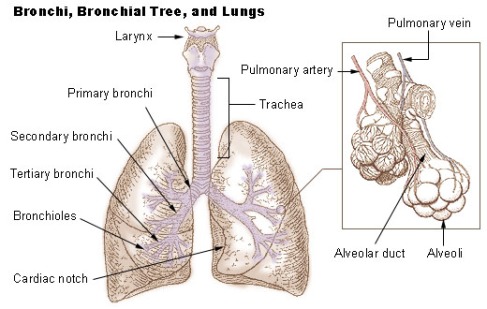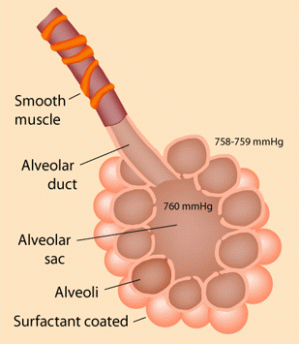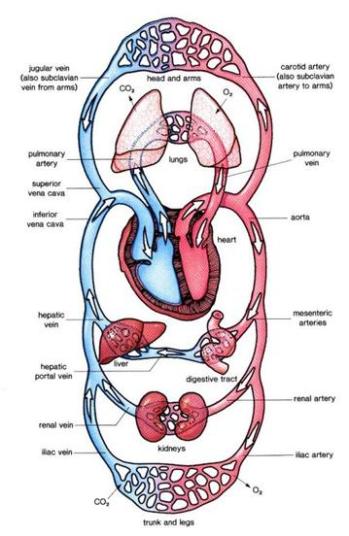Differently from Act 1 in which the three Weird Sisters appear directly, on Act 2 they appear indirectly through Banquo’s dream. (2.1.25) When Banquo reveals such a dream to his friend Macbeth, he quickly switches topic but Banquo insists on it and Macbeth suggests that they “can entreat an hour to serve” (2.1.29) to which Banquo replies “I shall be counseled.” (2.1.39)
All throughout Act 2, characters hallucinate: Macbeth sees a dagger (2.1.44), Lady Macbeth “heard the owl scream and the crickets cry” (2.2.20), the Porter talks to himself (2.3.1-20) and Macduff wonders “what three things does drink especially provoke” (2.3.27-28). These hallucinations bring about much of their characterization based upon the Weird Sisters’ point of view because they are the ones who provoke them to feel such intense things – eve if only inside of their minds.
The appaerance of the Three Weird Sisters in Act I
In Shakespeare’s Macbeth, the first appearance ever of a character is that of the Three Witches, which are also called the Three Weird Sisters. They enter the stage asking each other questions such as “When shall we three meet again? / In thunder, lightning, or in rain?” (1.1.1-2) because they plan on “meet[ing] with Macbeth.”(1.1.8) With this being said, I take it as proof that they are going to cast a spell upon Macbeth, but as the act continues, they meet Macbeth and tell him great news that will change his life: “All hail Macbeth! Hail to thee, Thane of Glamis! […] All hail, Macbeth, that shalt be king hereafter!” (1.3.51-53) They continue by saying that they are “Lesser than Macbeth and greater. / Not so happy, yet much happier. / Thou shalt get kings, though thou be none.” (1.3.68-70) These paradoxical ideas in which they profess Macbeth’s future tells the readers that even with the presence of an evil spirit inside them, they are happy to tell good news to Macbeth as he deserves to hear them.
As it is of witches’ nature, they casts spells upon people with the intention of ruining their lives. The first witch mentions that “A sailor’s wife had chestnuts in her lap / And munched and munched and munched. ‘Give me,’ quoth I.” (1.3.4-6) As expected, the woman did not give the chestnut to the witch and as a sign of angriness, the first witch told the other two: “Her husband’s to Aleppo gone, master o’ th’ Tiger / But in a sieve I’ll thither sail, / And, like a rat without a tail, / I’ll do I’ll do, and I’ll do.” (1.3.8-11) The plan of casting a spell is explained through the use of rhyming couplets in the following way: “I’ll drain him dry as hay. / Sleep shall neither night nor day […] Though his bark cannot be lost, / Yet it shall be tempest-tossed.” (1.3.19-26) The spell that the three Weird Sisters will cast upon the sailor is a form of punishment as his wife did not follow instructions given to her.
The Three Weird Sisters are the only ones who have the power to provide to people what they want to know about their future. Their portrayal is really important so far as they are the ones who predict the lives of the characters and therefore make the readers wonder the accuracy and veridity of their words. Without them, Macbeth wouldn’t be an interesting play filled with drama.
The importance of the Three Weird Sisters in Act I
In Shakespeare’s Macbeth, the first appearance ever of a character is that of the Three Witches, which are also called the Three Weird Sisters. They enter the stage asking each other questions such as “When shall we three meet again? / In thunder, lightning, or in rain?” (1.1.1-2) because they plan on “meet[ing] with Macbeth.”(1.1.8) With this being said, I take it as proof that they are going to cast a spell upon Macbeth, but as the act continues, they meet Macbeth and tell him great news that will change his life: “All hail Macbeth! Hail to thee, Thane of Glamis! […] All hail, Macbeth, that shalt be king hereafter!” (1.3.51-53) They continue by saying that they are “Lesser than Macbeth and greater. / Not so happy, yet much happier. / Thou shalt get kings, though thou be none.” (1.3.68-70) These paradoxical ideas in which they profess Macbeth’s future tells the readers that even with the presence of an evil spirit inside them, they are happy to tell good news to Macbeth as he deserves to hear them.
about them because even though their actions are cruel, their words are spoken correctly.
As it is of witches’ nature, they casts spells upon people with the intention of ruining their lives. The first witch mentions that “A sailor’s wife had chestnuts in her lap / And munched and munched and munched. ‘Give me,’ quoth I.” (1.3.4-6) As expected, the woman did not give the chestnut to the witch and as a sign of angriness, the first witch told the other two: “Her husband’s to Aleppo gone, master o’ th’ Tiger / But in a sieve I’ll thither sail, / And, like a rat without a tail, / I’ll do I’ll do, and I’ll do.” (1.3.8-11) The plan of casting a spell is explained through the use of rhyming couplets in the following way: “I’ll drain him dry as hay. / Sleep shall neither night nor day […] Though his bark cannot be lost, / Yet it shall be tempest-tossed.” (1.3.19-26) The spell that the three Weird Sisters will cast upon the sailor is a form of punishment as his wife did not follow instructions given to her.
Such passages suggest that without the three Weird Sisters, Macbeth would be a play without much action making it boring to read. Their portrayal is really important so far as they are the ones who predict the lives of the characters and therefore make the readers wonder the accuracy and veridity of their words.
6.4 Gas Exchange
6.4.1 Distinguish between ventilation, gas exchange and cell respiration
 http://mysciencevirtualclass.blogspot.com.br/2011_01_01_archive.html
http://mysciencevirtualclass.blogspot.com.br/2011_01_01_archive.html
When air is inhaled,oxygen diffuses into alveolus (ventilation), then into lung capillary and lastly out of body capillary (gas exchange) in order to react for aerobic cell respiration (cell respiration). Oxygen is then transformed into carbon diozxide which is a product of cell respiration (cell respiration), diffues into body capillary and lung capillary (gas exchange) and lastly diffuses out of alveolus (ventilation).
6.4.2 Explain the need for a ventilation system
 http://en.labs.wikimedia.org/wiki/Human_Physiology/The_respiratory_system
http://en.labs.wikimedia.org/wiki/Human_Physiology/The_respiratory_system
Our bodies are so thick that only our outside cells are directly exposed to air. In order to maintain the concentration gradients of gases in the alveoli, a ventilation system is needed because it is able to get rid of the carbon dioxide in the alveoli and bringing in more oxygen.
6.4.3 Describe the features of alveoli that adapt them to gas exchange
http://hyperphysics.phy-astr.gsu.edu/hbase/ptens2.html
The more alveoli present, the greater surface area for gas exchange. Also, the alveoli is covered by a dense network of capillaries with low oxygen and high carbon dioxide concentration, allowing oxygen to diffuse into the blood and carbon dioxide to diffuse out of the blood.
6.4.4 Draw and label a diagram of the ventilation system, including trachea, lungs, bronchi, bronchioles and alveoli
http://iaquk.org.uk/ResourcesRespiratory.html
6.4.5 Explain the mechanism of ventilation of the lungs in terms of volume and pressure chnages caused by the internal and external intercostal muscles, the diaphragm and abdominal muslces
 http://www.merckmanuals.com/home/lung_and_airway_disorders/biology_of_the_lungs_and_airways/control_of_breathing.html
http://www.merckmanuals.com/home/lung_and_airway_disorders/biology_of_the_lungs_and_airways/control_of_breathing.html
Volume and pressure have inverse relations; therefore as volume decreases, pressure proportionally increases and vice-versa.
As air is inhaled, the diaphragm contracts while the abdominal and intercostal muscles help raise the rib cage. Since the thoracic cavity has increased its volume, the pressure inside it decreases. Air then flows into the lungs from the nasal passage or mouth, through the trachea, bronchi and bronchioles until the lung´s pressure rises to atmospheric pressure.
As air is exhaled, the diaphragm relaxes while the abdominal and intercostal muscles help lower the rib cage. Since the thoracic cavity has decreased its volume, the pressure inside it increases. Pressure rises above atmospheric pressure. Air then flows outside the lungs through the mouth or nasal passage until the pressure in the lungs has fallen back to atmospheric pressure.
6.2 The Transport System
6.2.1 Draw and label a diagram of the heart showing the four chambers, associated blood vessels, valves, and the route of blood through the heart
http://scienceofvbek.blogspot.com.br/2010/08/human-heart.html
6.2.2 State that the coronary arteries supply heart muscle with oxygen and nutrients
http://biology.about.com/od/anatomy/ss/Coronary-Arteries.htm
The coronary arteries supply oxygenated and nutrient filled blood to the heart. There are two main coronary arteries: 1) the right coronary artery (RCA) and 2) the left main coronary artery (left main trunk).
The right coronary artery divides itself into the 1) right marginal artery and 2) posterior descending artery. They are able to supply the 1) right atrium, 2) right ventricle, and 3) bottom portion of both ventricles and septum.
The left main coronary artery divides itself into the 1) circumflex artery and 2) left anterior descending (LAD) artery. The circumflex artery supplies blood not only to the left atrium but also to the left ventricle – both its side and back. The LAD artery supplies the left ventricle – front and bottom – and the septum´s front.
6.2.3 Explain the action of the heart in terms of collecting blood, pumping blood, and opening and closing of valves
The flow of blood is done so by two ways: 1) the pulmonary circulation through your heart´s right side or 2) the systematic circulation through your heart´s right side.
The pulmonary cirulation starts in both the superior and inferior vena cava and goes through the right atrium – where a volume of blood is collected. It then continues into the right ventricle and passes through the right atrioventricular valve. After that, the right atrium then contracts in order to force any remaining blood into the right ventricle. Once there is enough volume of blood in the right ventricle, it starts contracting. The contraction iniates the processes of 1) closing the atrioventricular valve to prevent blood from backflowing into the right atrium, 2) dramatically increasing the blood pressure inside the right ventricle leading to the opening of the right semilunar valve and allowing blood to enter the pulmonary artery, and 3) blood leaving the heart through the pulmonary artery due to its great increase in pressure.
The systematic cirulation starts in the pulmonary vein and goes through the left atrium – where a volume of blood is collected. It then continues into the left ventricle and passes through the left atrioventricular valve. After that, the left atrium contracts in order to force any remaining blood into the left ventricle. Once there is enough volume of blood in the left ventricle, it starts contracting. The contraction initiates the processes of 1) closing the atrioventricular valve to prevent blood from backflowing into the left atrium, 2) dramatically increasing the blood pressure inside the left ventricle leading to the opening of the left semilunar valve and allowing blood to enter the aorta, and 3) blood leaving the heart through the aorta due to its great increase in pressure.
6.2.4 Outline the control of the heartbeat in terms of myogenic muscle contraction, the role of the pacemaker, nerves, the medulla of the brain and adrenaline
 http://stanfordhospital.org/clinicsmedServices/COE/heart/DiseasesConditions/arrhythmia/treatments/permanent-pacemaker/
http://stanfordhospital.org/clinicsmedServices/COE/heart/DiseasesConditions/arrhythmia/treatments/permanent-pacemaker/
Myogenic muscle contraction is when a heart muscle can contract by itself without the stimulation of a nerve. These contractions are initiated by the pacemaker everytime it sends a signal. While one nerve carries messages from the medulla of the brain to the pacemaker and speeds up the beating of the heart; the other nerve carries messages from the medullla of the brain to the pacemaker and slows down the beating of the heart. The adrenaline is then carried by the blood and reaches the pacemaker, signaling it to increase the beating of the heart.
6.2.5 Explain the relationship between the structure and function of arteries, capillaries and veins
http://katiecardiac.blogspot.com.br/2010_04_01_archive.html
Arteries: 1) have thick wall and elastic fibers to withstand high pressures, 2) narrow lumen to maintain high pressure, and3) thick layers of circular elastic fibers and muscle fibers to pump blood.
Veins: 1) wide lumen to facilitate blood flow, 2) thin outer layer of longitudinal collagen and elastic fibers as pressure is low, 3) valves to prevent backflow between pulses, and 4) thin walls so that nearby muscles can help push blood towards the heart.
Capillaries: 1) small lumen so that various can fit in one place, 2) wall is one cell layer thick in order for diffusion´s distance to be small, and 3) no valves since pressure is low.
6.2.6 State that blood is composed of plasma, erythrocytes, leucocytes (phagocytes and lymphocytes) and platelets
http://shs-bio-6th-wood.wikispaces.com/
Erythrocytes are red blood cells that cotain hemoglobin. They allow efficient transportation of oxygen and carbon dioxide in the body despite not having a nucleus and living only for 100 days.
Leucocytes are white blood cells present in the bloodstream that can identify and eliminate threats to the body once they are inside the circulatory system by phagocytosis.
Platelets are small, colorless cells that last an average of 4 days and lack a nucleus because they play an important but integral role in blood clotting.
6.2.7 State that the following are transported by the blood: nutrients, oxygen, carbon dioxide, hormones, antibodies, urea and heat
http://human-body.wikispaces.com/Circulatory+System
Nutrients are transported by glucose and amino acids. Oxygen is the reactant needed for aerobic cell respiartion. Carbon dioxide is a waste product of aerobic cell respiration. Hormones are transported from gland to target cells. Antibodies are protein molecules involved in immunity. Urea is a nitrogenous waste filtered out of the blood by kidneys. Heat are skin arterioles that can change diameter in order to lose or gain heat.
6.1 Digestion
6.1.1 Explain why digestion of large food molecules is essential
http://www.health-lesson-plans-teacher.com/digestivesystem.html
The food that we ingest have very large molecules and therefore are unable to pass across any cell membrane. Through digestion, the large molecules are broken down into smaller molecules that later are reassembled to large molecules that are beneficial for the human body.
6.1.2 Explain the need for enzymes in digestion
http://karimedalla.wordpress.com/2012/10/16/3-6-7-6-enzymes/
Enzymes are protein that act as biological catlysts in reactions to break down the food that is ingested. Digestion could occurr naturally at a normal body temperature, but due to its slow reaction rate, the body temperature would need to increase. Since the increase in temperature of the body will interfere with other body functions, the only possible way of speeding up the reaction is lowering the activation energy for the reaction in order for it to occur at normal body temperature.
6.1.3 State the source, substrate, products and optimum pH conditions for one amylase, one protease, and one lipase
http://it.wikipedia.org/wiki/File:Major_digestive_enzymes.png
The salivary amylase has an optimum pH of 7 (neutral) and is found within the salivary glands. It starts as amylose (starch) and ends as maltose and glucose.
Pepsin (protease) has an optimum pH of 3 (acidic) and is found within the stomach cells. It strats as proteins (polypeptides) and end as amino acids.
The pancreatic lipase has an optimum pH of 7 (neutral) and is found within the pancreas cells. It starts as lipids and end as glycerol and fatty acids.
6.1.4 Draw and label a diagram of the digestive system
http://en.wikipedia.org/wiki/Digestion
6.1.5 Outline the function of the stomach, small intestine and large intestine
http://www.fitlife.tv/featured/4-tips-for-improving-digestion/
The stomach´s main role are to expand to temporarily store food and produce pancreatic amylase. The large intestine is responsible to absorb water and minerals. The small intestine´s main role is to absorb the small food particles resulted from digestion.
6.1.6 Distinguish between absorption and assimilation
http://click4biology.info/c4b/6/hum6.1.htm
Absorption occurs when the food enters the body as the food molecules pass through a layer of cells and into the bodies tissues. This occurs in the small intestine which has many villi that are specialised for absorption. Assimilation occurs when the food molecules becomes part of the bodies tissue. Therefore, absorption is followed by assimilation.
6.1.7 Expalin how the structure of the villus is related to its role in absorption and trasport of the product of digestion
http://ajpip.com/ (originally from Google images)
Having a great amount of villi increase the surface area for absorption. Since the epithelium is one cell layer thick, the food is quickly absorbed. The microvilli in the villi help incease the surface area for further absorption. Protein channels and pumps are present in the microvilli for absorption.














